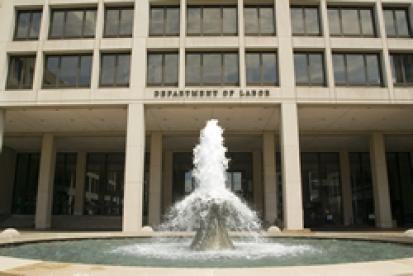On September 8, 2020, a federal district court struck down the U.S. Department of Labor’s (“DOL”) Final Rule on joint employer liability, concluding that the Rule violated the Administrative Procedure Act (“APA”) by impermissibly narrowing the definition of joint employment under the Fair Labor Standards Act (“FLSA”), departing from the DOL’s prior interpretations on joint employment without adequate explanation, and otherwise being arbitrary and capricious. We previously blogged about the details of the Final Rule here. The DOL published the Final Rule in the Federal Register on January 16, 2020 with an effective date of March 16, 2020.
What is Joint Employment?
Joint employment is the principle that an individual worker can have multiple employers, all of which are potentially responsible for ensuring FLSA compliance. The joint employment doctrine has a long and well-developed history, including numerous interpretative guidance documents issued by the DOL and a multitude of court decisions. These various interpretations at their core have explained that a joint employment relationship is based on “economic reality” that takes into account various non-exclusive and non-dispositive circumstances surrounding the relationship between the worker and the putative joint employer. Before the Final Rule, the DOL had instructed, and courts had likewise found, that while an employer’s formal or indirect right to “control” a worker in the workplace can be a contributing, or even independently decisive, factor in determining the existence of a joint employment relationship, it is not the only or necessarily dispositive factor. Rather, the economic reality is based, in part, on a determination of whether a worker economically depends on a putative joint employer.
How Did the Final Rule Change the Analysis of Joint Employment?
The DOL posited two joint employment scenarios, what it describes as “vertical joint employment” and “horizontal joint employment.” According to the Final Rule, vertical joint employment exists where the employee has an employment relationship with one employer, e.g., a staffing agency or subcontractor, whereas horizontal joint employment exists where the employee has employment relationships with multiple and related or associated employers. The DOL in its Final Rule arguably departed from the economic reality analysis, adopting a four-factor balancing test for evaluating potential vertical joint employment relationships focused exclusively on control (derived from a Ninth Circuit decision in Bonnette v. California Health & Welfare Agency, 704 F.2d 1465 (9th Cir. 1983)), which includes whether the putative joint employer (i) hires or fires the employer, (ii) supervises and controls the employee’s work schedule or conditions of employment to a substantial degree, (iii) determines the employee’s rate and method of payment, and (iv) maintains the employee’s employment records. The DOL has stated that it intended the Final Rule to provide clarity by casting a uniform joint employment standard to avoid disparate interpretations by circuit courts throughout the country.
What Was the Basis of the Lawsuit to Vacate the Final Rule?
In response to the Final Rule, certain jurisdictions, including New York, Pennsylvania, California, Colorado, Delaware, Illinois, Maryland, Massachusetts, Michigan, Minnesota, New Jersey, New Mexico, Oregon, Rhode Island, Washington, Vermont, Virginia, and the District of Columbia, filed suit to vacate it and to enjoin its implementation under the APA, which sets forth the procedures by which federal agencies are accountable to the public and their actions subject to review by courts. Pursuant to the APA, agency actions, including rules, may be set aside if they are arbitrary, capricious, an abuse of discretion, or otherwise not in accordance with law. The parties filed cross motions for summary judgment to decide the fate of the Final Rule.
U.S. District Judge Gregory Woods for the Southern District of New York found that the Final Rule’s changes to horizontal joint employer liability are severable, and that because the Final Rule makes only “non-substantive revisions” to existing law for horizontal joint employer liability, they can function independently from the changes to vertical joint employer liability. Judge Woods, however, granted the Plaintiffs’ motion to vacate the Final Rule as it pertains to vertical joint employment. The court found numerous infirmities, faulting the DOL’s application of different tests for “primary” and “joint” employment where the FLSA does not provide a separate definition of, or test to determine, joint employment. Judge Woods further opined that the Final Rule’s test for joint employment is impermissibly narrow where the four factors are really just “a proxy for control,” which is inconsistent with the DOL’s previous interpretive guidance, as well as a significant body of case law.
Notably, Judge Woods acknowledged that an agency rule is “entitled to a measure of respect, and the weight accorded to such interpretations depends on their thoroughness, validity, consistency and power to persuade,” but then concluded that the DOL’s interpretation is “unpersuasive, [] conflicts with prior Department interpretations [,] . . . and, [i]n any event . . . contradicts the FLSA.” In addition, Judge Woods held the Final Rule to be arbitrary and capricious because the DOL failed to adequately explain why it departed from its prior interpretations, failed to consider consistency within the DOL’s existing regulations, and did not adequately consider the Final Rule’s cost to workers. On this last point, Judge Woods alluded to the DOL’s Notice of Proposed Rulemaking, in which the DOL provided that reducing the number of joint employers (through issuance of the Final Rule) would not affect the wages due employees because such employees could still recover the wages due from the employees’ primary employer. Rejecting this proposition, Judge Woods commented that the DOL’s rationale is “silly” because taken to its logical conclusion, if (“primary”) employers always fulfill their legal obligations, then the Final Rule serves no purpose.
What Should Employers—or Potential Joint Employers—Do Now?
While it is unclear whether the DOL will appeal the Court’s decision or abandon the Final Rule and perhaps pursue new rulemaking, employers should be mindful that, for now, absence of control over workers will not automatically result in the avoidance of joint employer status. Rather, courts will evaluate joint employment by considering the overall economic reality of the parties’ working relationships, which includes, but is not limited to workers’ economic dependence on putative joint employers. Accordingly, it is important that putative joint employers carefully review their contractual relationships with third parties, such as staffing agencies or subcontractors, as well as the actual working relationships with the workers who are performing the work for the benefit of the putative joint employers to determine whether there is potential risk of an actual joint employment relationship. In such cases, putative joint employers should ensure that they are acutely aware of the third party employer’s wage and hour practices with respect to the workers at issue to confirm that their practices are in compliance with the FLSA and state wage and hour laws and regulations. Putative joint employers should also consider implementing contractual safeguards, such as representations and warranties with respect to direct employers’ wage and hour practices, as well as indemnification provisions, to further protect against potential joint employer liability.




 i
i

